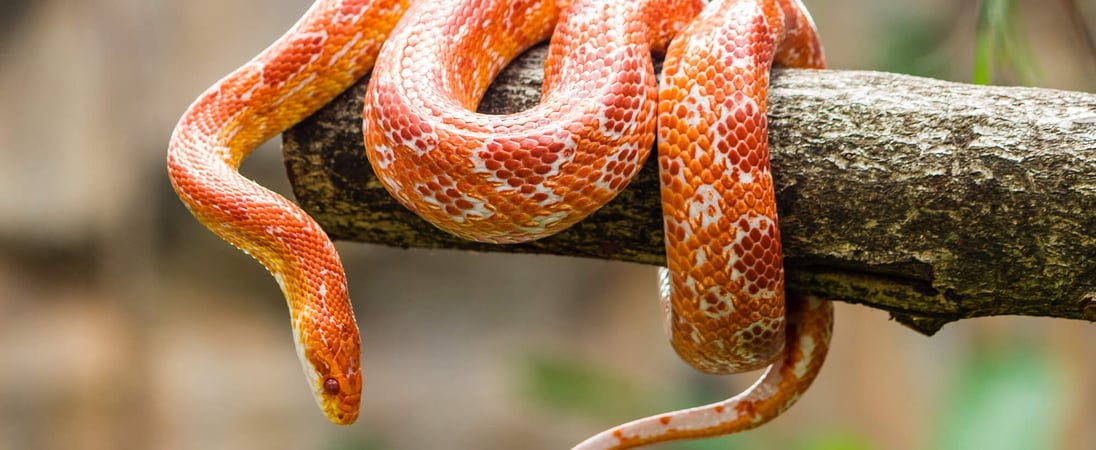
World Snake Day
If you have a pet snake, show them a little extra love and pampering. Help end the stigma around snakes, and see what you can do to help endangered species.
Snakes have gotten something of a bad rap over the past few thousand years.
What with that one snake tricking that nice lady into eating an apple way back when, thus condemning the entire human race to mortality, snakes have been mistrusted if not flat-out feared.
And while it is understandable that people may fear an animal that can easily kill them, we think these fascinating, diverse creatures that range from several inches to 30 feet long, and from friendly and docile to aggressive and deadly, deserve for people to find out more about them.
Learn About World Snake Day
World Snake Day is an important day when it comes to increasing awareness about the different species of snake all around the world.
Snakes tend to have a negative connotation. A lot of people are scared of snakes, and of course, we can definitely understand the reasons why!
No one likes the thought of being gobbled up by a snake, do they? Plus, when someone is two-faced or a bad person, they are often referred to as snakes. However, snakes are great creatures and they are so important to the world that we live in.
Did you know that there are more than 3,5000 species of a snake around the world?
Because of this, it is not going to be a challenge for you to find a snake that fascinates you and interests you that you may not have heard of before, even if you are someone who is interested in snakes and you have a pet snake of your own!
So, this is one of the good reasons why to research snakes and learn more about them on this date. After all, there is so much that you can learn!
Of the 3,500 species of a snake around the world, there are only around 600 that are venomous. This is less than 25 percent of snakes!
There are only 200 species of snake that pose a considerable risk to human life as well. Therefore, snakes are nowhere near as worrying or scary as we think they are.
Of course, this does not mean that you should go up and start petting any snake that you come across! However, it is definitely something to think about. Perhaps we give these animals a much harder time than they deserve?
History of World Snake Day
The snake is one of the oldest mythological characters and has been revered by civilizations the world over.
There are about 3,458 species of snakes known so far, ranging from the semi-frozen tundra of northern Canada to the steamy jungles of the equator and most of the world’s oceans.
Snakes are highly effective predators and play a vital role in maintaining the balance of nature in each of these realms.
Snakes are also fascinating in that they have a prehistoric lineage, thus giving us a glimpse back to a prehistoric time when the earth was ruled by reptiles—many people have no idea that modern reptiles are literally the living, breathing cousins of dinosaurs.
The species that seem to fascinate people the most are the King Cobra, the largest venomous snake in the world most people have seen in movies being coaxed out of a basket by a snake charmer; the Rattlesnake, that has forced countless people to suck its poison out of the bite before it’s too late; and the Reticulated Python, the world’s longest snake that kills its prey by strangling it.
World Snake Day was created to help people learn more about these animals and how much they contribute to the world as we know it.
How to Celebrate World Snake Day
Have you ever thought about having a pet snake? Snakes may not be the right pet for everyone, but if you have it in you to take on the challenge it is to own and care for a pet snake, World Snake Day may be the time to make that decision.
If not, however, you can take advantage of this day to learn some more about these incredible animals. Here are some interesting facts to help you do that:
Where do snakes live?
Snakes are found in every continent except Antarctica in the sea, forests, deserts, prairies, and even your backyard or garage.
What do snakes eat?
Snakes consume many different animals including insects small rodents and frogs. Snakes eat their prey whole because their lower jaw can separate from the upper jaw. Very large snakes can even eat small deer, pigs, monkeys, and even primates.
How do snakes behave?
Snakes rely on the environment to regulate their body temperature. They spend as long in the warm sun as they need to in order to get warm, and when they become too warm, they find shade to cool off.
They are generally not aggressive unless they are hunting or feel like they need to defend themselves. They shed their skin three to six times a year.
How do they defend themselves?
Snakes use a variety of techniques defend themselves, including camouflage, biting and envenoming those they feel are threatening them. Sometimes they simply curl up in a tight ball to hopefully avoid being seen.
Why are some snakes endangered?
Fortunately, snakes are not widely hunted, but their numbers are still declining due to deforestation and climate change causing the deterioration of their habitats and a declining amount of available prey.
As mentioned earlier, there are many different species of snakes, and so you can spend some time learning about them and their various qualities and features.
For example, the Barbados thread snake is the smallest snake in the world. This serpent is actually smaller than a nightcrawler, coming in at only approximately four inches. In terms of the heaviest snake, this honor goes to the green anaconda.
The reticulated python is the longest snake in the world. If you spend some time doing a bit of reading, we are sure that you will be fascinated with the results.
You could also spend some time watching films that are based on snakes. There are a lot of different films whereby snakes play a big role.
This includes Harry Potter and the Chamber of Secrets, Snakes on a Plane, and Raiders of the Lost Ark. Of course, the most famous snake film is Anaconda.
There are a lot of great deaths that have occurred in cinema at the hand of snakes, but this is definitely the greatest. If you have not seen this film before, now is the perfect time for you to watch it!
World Snake Day FAQs
Why are snakes associated with rain in some cultures?
In African and Australian Aboriginal folklore, snakes are linked to rain and fertility.
The Rainbow Serpent, a common figure, is believed to bring rain and life to the land. Farmers in some areas still honor snakes as protectors of water sources and harvests.
Do snakes have unique ways of hunting their prey?
Some snakes, like the thread snake, use unusual strategies. These tiny snakes invade ant colonies and mimic the ants’ scent to avoid detection.
This stealthy tactic allows them to feed undisturbed in a highly hostile environment.
What’s the connection between snakes and dreams?
In many cultures, dreaming of snakes has symbolic meanings.
In Hinduism, snakes in dreams often signify transformation or protection. Conversely, in Western traditions, they can symbolize hidden fears or dangers, depending on the dream’s context.
Which snake-inspired artworks have left a mark on history?
Snakes have inspired art for centuries. The Aztec god Quetzalcoatl, the feathered serpent, features prominently in Mesoamerican carvings and murals.
Modern artists like Gustav Klimt also incorporated serpentine imagery into their works, celebrating their mystique.
How do snakes survive extreme environments?
Desert snakes like the sidewinder move diagonally to navigate hot sand efficiently.
Meanwhile, Antarctic researchers discovered fossil evidence of prehistoric snakes adapted to colder climates, proving their ancient adaptability.
Are there any snakes with unique survival mechanisms?
The hognose snake plays dead when threatened, lying belly-up and emitting a foul odor.
Its dramatic performance even includes a gaping mouth and limp body, fooling predators into thinking it’s already dead and inedible.
What’s the role of snakes in ancient healing practices?
The Asklepion temples of ancient Greece housed live snakes for healing rituals. Patients believed the snakes, sacred to Asclepius, would cure ailments by crawling over them during their stay.
What are the most venomous snakes rarely discussed?
The sea snake, often overlooked, is among the most venomous creatures. Its venom is 10 times more potent than a cobra’s. Luckily, sea snakes are shy and rarely bite humans unless provoked.
How do snakes communicate without vocal cords?
Snakes use body language to communicate. Cobras spread their hoods, rattlesnakes shake their tails, and others vibrate their bodies to signal threats.
These non-verbal cues are crucial for survival and territory defense.
What is the strangest food a snake has ever eaten?
In rare cases, large pythons have consumed prey like crocodiles or deer. Researchers once found a python in Florida that tried to swallow an alligator, though both animals didn’t survive the ordeal.
See what else is happening…
There’s always more going on every month at Days Of The Year. Here are our favorites this month!
Also on ...
View all holidaysFresh Spinach Day
Grow your muscles like Popeye and boost your overall health by incorporating fresh spinach into your diet, from salads to smoothies to sandwiches.
National Hot Dog Day
Sink your teeth into a juicy, savory, grilled delight that's perfect for any occasion. It's the ultimate comfort food on-the-go!
National Atomic Veterans Day
Dedicated individuals who bravely served, witnessing historic events with lasting impact. Their sacrifice and contributions resonate, inspiring gratitude and remembrance.




